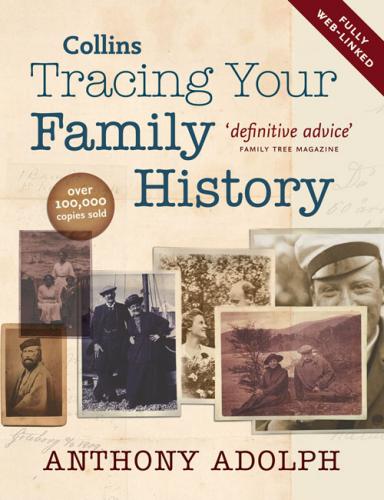The beginning of St Luke’s Gospel, Lindisfarne Gospels, c.698.
This section covers the big records in genealogy – birth, marriage and death records, censuses, and so on. These form the backbone of your family tree and should provide you with a vastly increased knowledge of your family history.
CHAPTER FIVE GENERAL REGISTRATION
For most people tracing ancestors in Britain and overseas, record-based research often starts with General Registration records of birth, marriage and death. These records are increasingly accessible via the Internet, and also held both centrally and regionally.
The main use of these records to genealogists is that birth records usually provide parents’ names; marriage records usually provide at least the father’s name and death certificates provide ages, and those for some countries provide details of place of birth and parentage. They provide names of the next generation back, which is exactly what you want.
USING GENERAL REGISTRATION
General Registration was introduced in England and Wales on 1 July 1837 as part of the government’s attempts to find out how many people lived in the country, how quickly they were breeding, what was killing them – and, of course, how much they could be conscripted and taxed in the intervening time. The country was divided into registration districts, each split into sub-districts under a local registrar. These local registrars were responsible to the registrar general at the General Register Office (GRO), now part of the Office of National Statistics. Births and deaths were to be reported to the local registrar, who reported them to his superintendent registrar, who in turn sent copies to the Registrar General in London. Marriages could be performed by Anglican clergy or local registrars in their own offices or in Catholic or non-conformist chapels. From 1898, non-Anglican marriages could be performed in the presence of an authorised person (usually a clergyman) without the local registrar needing to be present. In all cases, copies of the resulting certificates were sent to the registrar general.
The registrar general’s clerks then compiled separate alphabetical indexes to births, marriages and deaths, each divided into four quarters of each year: January-March, April-June, July-September and October-December, known as the March, June, September and December quarters respectively.
FRC INDEXES
FROM 1984 THE INDEXES are annual rather than quarterly. Marriages are indexed in the quarters in which they took place but births can be registered up to six weeks after they took place, so may appear in the next quarter, and death registration can be held up by lengthy inquests or post mortems.
Mary Ann Collingwood Paterson, before her wedding to Rev. Patrick Henry Kilduff in 1879.
FINDING A CERTIFICATE
AN IDEAL CASE INVOLVING MANUAL GENERAL REGISTRATION WOULD WORK AS FOLLOWS:
